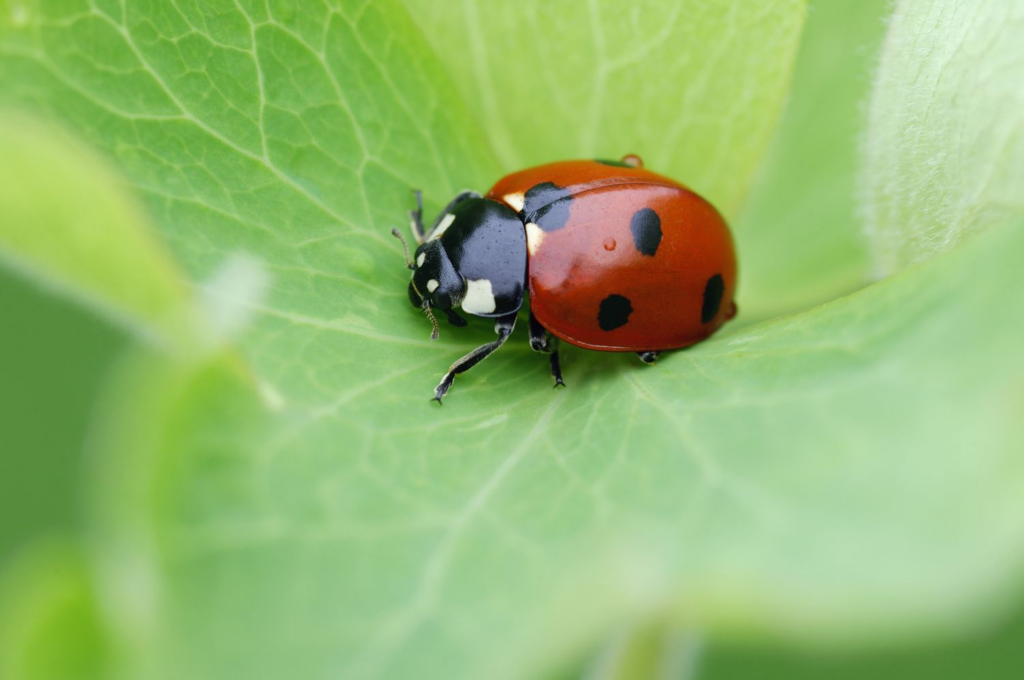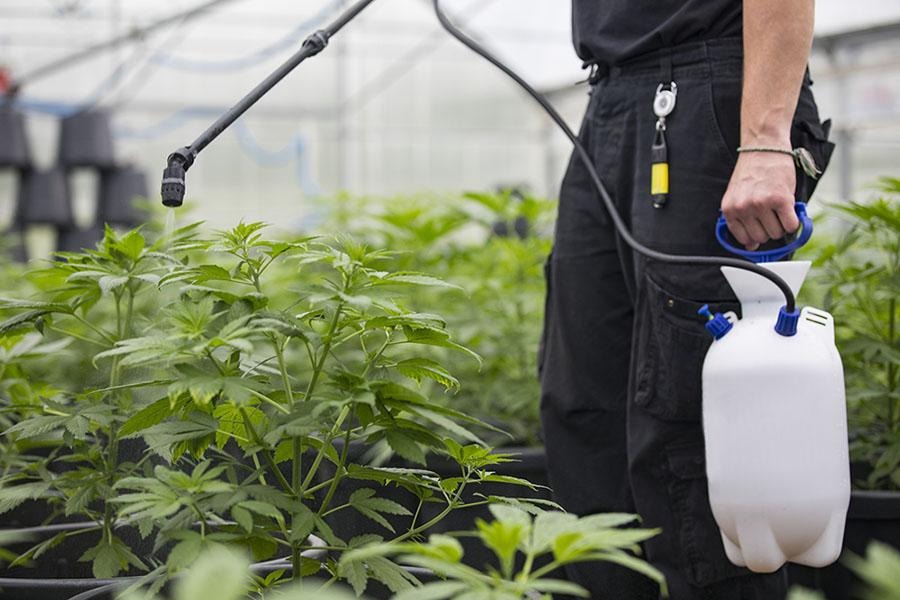Cannabis farming has seen significant growth, both in popularity and demand, especially as legalization spreads across various regions. With this expansion, cannabis growers face increasing challenges related to pest management. While conventional pesticides may offer a quick solution, they often come with detrimental side effects such as environmental harm, contamination of the cannabis crop, and the potential to create pesticide-resistant pests. As a result, more and more cannabis farmers are turning to natural pest control methods, one of the most effective being the use of beneficial insects. This approach not only helps to manage pests in an eco-friendly way but also promotes a healthier, more sustainable farming environment.
What Are Beneficial Insects?
Beneficial insects are those that help control pest populations by either directly feeding on them or by outcompeting them for resources. These insects can provide natural pest control without the need for harmful chemicals, making them an essential part of an organic or eco-conscious cannabis farming operation. Beneficial insects fall into two main categories: predators and parasitoids. Predators actively hunt and consume pests, while parasitoids lay their eggs inside or on pest species, with the larvae feeding off the pest as they develop.
Utilizing beneficial insects for pest management in cannabis farming is not only effective but also an environmentally friendly choice. Let’s take a deeper look at how these beneficial insects can help in cannabis pest control.
Why Choose Natural Pest Control for Cannabis Farming?
The cannabis industry faces its own unique set of pest-related challenges. Cannabis plants are susceptible to a range of insects, including aphids, spider mites, and whiteflies, among others. These pests can cause significant damage to cannabis plants, leading to decreased yields, poor-quality buds, and the potential for mold and mildew outbreaks.
While synthetic pesticides can kill pests, they often leave harmful residues that can affect the quality and safety of the cannabis crop. Moreover, chemical treatments can disrupt the balance of the local ecosystem, potentially harming beneficial organisms. By integrating beneficial insects into the farming ecosystem, cannabis growers can reduce or eliminate their reliance on synthetic chemicals and promote biodiversity, ultimately leading to a healthier crop.
Common Pest Problems in Cannabis Farming
Cannabis plants are vulnerable to several pests that can severely impact their growth and overall health. Below are a few common pests that cannabis growers may encounter:
1. Aphids
Aphids are small, sap-sucking insects that infest cannabis plants, causing deformed leaves, stunted growth, and the spread of harmful diseases. Aphids reproduce quickly, making it easy for them to form large colonies and wreak havoc on the plants.
2. Spider Mites
Spider mites are tiny arachnids that live under the leaves of cannabis plants. They feed on the plant’s sap, causing yellowing of the leaves, leaf drop, and webbing. Spider mite infestations can rapidly spread, especially in hot, dry environments, and may severely damage the crop.
3. Whiteflies
Whiteflies are small, winged insects that feed on the undersides of cannabis leaves. They excrete a sticky substance called honeydew, which can attract mold and other pathogens. Whiteflies can cause plants to weaken, become discolored, and even lead to leaf drop.
Types of Beneficial Insects for Cannabis Farming
Now that we understand the need for pest control in cannabis farming, let’s explore some of the most effective beneficial insects that can help cannabis growers tackle pest problems.
1. Ladybugs (Ladybird Beetles)
Ladybugs are one of the most widely recognized beneficial insects in the world. They are voracious predators, feeding on aphids, mealybugs, and other small pests. A single ladybug can consume up to 50 aphids a day. These beetles are particularly effective in managing aphid populations on cannabis plants and can significantly reduce the need for chemical treatments. Ladybugs are easy to introduce to a cannabis farm, and their presence will naturally help maintain pest populations in check.

Benefits of Ladybugs:
- Eat large quantities of aphids and other small pests
- Easy to introduce and maintain on cannabis farms
- No harm to plants or the environment
2. Predatory Mites (Phytoseiulus Persimilis)
Predatory mites are an excellent natural control method for spider mites, one of the most common and damaging pests in cannabis farming. These tiny mites feed on spider mites and their eggs, helping to reduce their populations. Predatory mites are particularly useful in indoor cannabis farming setups where spider mites can quickly become a problem.
Benefits of Predatory Mites:
- Highly effective against spider mites and their eggs
- No harm to cannabis plants or other beneficial insects
- Can be used indoors and outdoors
3. Green Lacewing Larvae
Green lacewing larvae are natural predators of aphids, thrips, whiteflies, and other small pests. The larvae actively hunt down and feed on pest insects, making them a highly effective pest control solution. Green lacewings are particularly useful in controlling aphid populations in cannabis farms.
Benefits of Green Lacewing Larvae:
- Excellent for aphid control
- Target a wide range of pests, including whiteflies and thrips
- Do not harm cannabis plants or beneficial insects
4. Parasitic Wasps
Parasitic wasps are parasitoid insects that lay their eggs inside pest insects like aphids, whiteflies, and caterpillars. The larvae hatch inside the pest, eventually killing it. This natural form of pest control is particularly effective in reducing pest populations over time. Parasitic wasps can help control pests that may be difficult to manage using other methods.
Benefits of Parasitic Wasps:
- Effectively control aphids, whiteflies, and caterpillars
- Natural predator that doesn’t harm cannabis plants
- Reduces the need for direct pesticide applications
5. Tachinid Flies
Tachinid flies are parasitic insects that attack a variety of pests, including caterpillars and other soft-bodied larvae. These flies lay their eggs on or inside pest insects, and the emerging larvae feed on the pests, ultimately killing them. Tachinid flies are an effective way to control pest populations on cannabis farms without the use of chemicals.
Benefits of Tachinid Flies:
- Target pests like caterpillars and larvae
- Help control pest outbreaks in cannabis farms
- Safe for plants and other beneficial insects
How to Introduce Beneficial Insects to Your Cannabis Farm
Introducing beneficial insects to your cannabis farm is a relatively simple process. Here are a few steps to follow:
- Identify Your Pest Problems: Understand which pests are affecting your crops. Different beneficial insects target different pests, so it’s essential to know which ones you need to control.
- Choose the Right Beneficial Insects: Based on the pests you’re dealing with, select the appropriate beneficial insects that will help control those specific pests.
- Release the Insects: Most beneficial insects can be purchased online or through specialized suppliers. When you receive your insects, release them onto your plants early in the day or late in the evening when it’s cooler, allowing them to settle and begin hunting.
- Monitor and Maintain: Keep an eye on the pest populations and the activity of the beneficial insects. You may need to release additional beneficial insects during the growing season if pest populations increase again.
Conclusion
Beneficial insects offer a natural and effective solution for cannabis growers seeking to control pests without resorting to harmful chemicals. By introducing insects like ladybugs, predatory mites, and parasitic wasps, cannabis farmers can ensure healthy, thriving crops while promoting a sustainable and eco-friendly farming practice. With their help, it’s possible to cultivate cannabis in a way that is both environmentally responsible and beneficial to the plant, the grower, and the surrounding ecosystem. By embracing these natural pest control methods, cannabis farmers are taking a step towards a more organic and healthier future for the cannabis industry.

